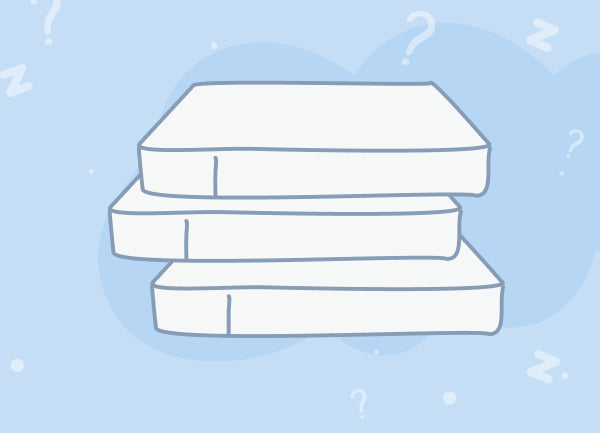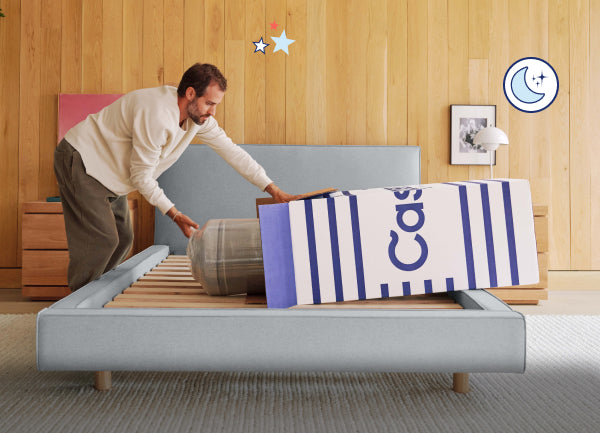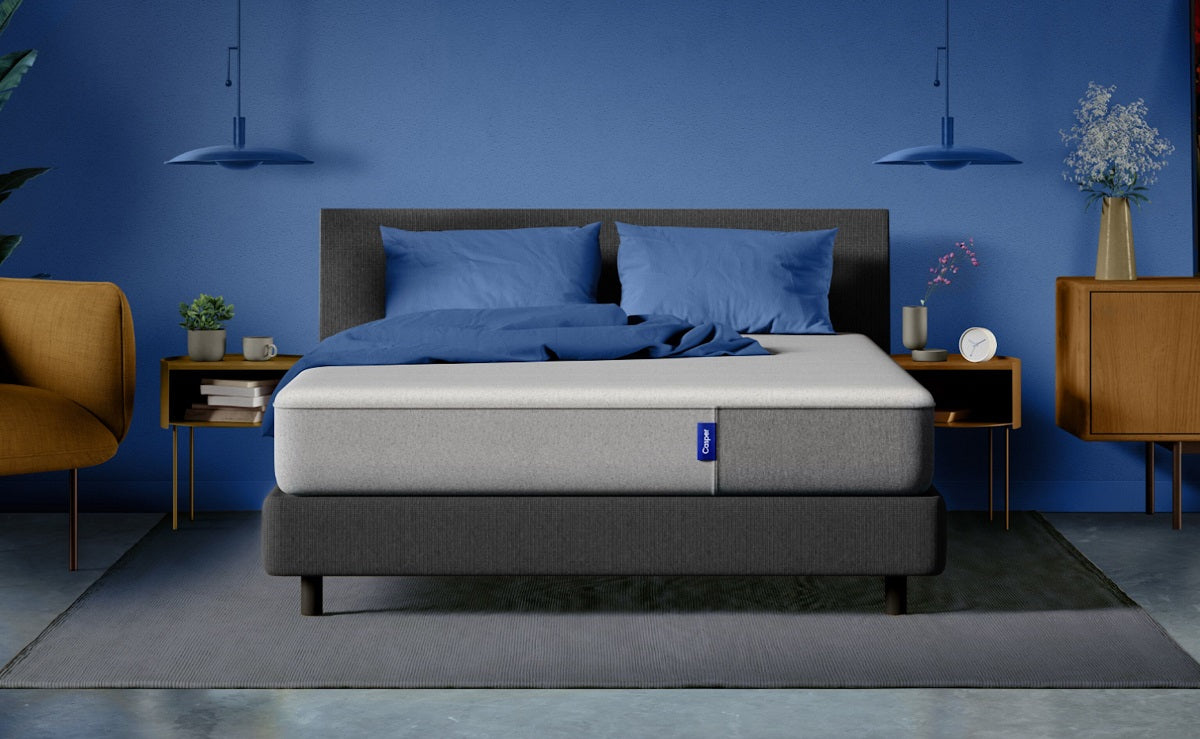If you’re a sleeper who likes to stretch out, cuddle up with a cat or dog, or shares space with a partner or child, chances are you’ve sometimes found yourself longing for a little more sleeping room. While full and twin beds can function fine for some individuals, people eventually upgrade to a queen bed size—a roomy option that can fit easily in mid- to large-sized rooms.
It’s easy to see why standard queen beds are among the most popular size mattress sold today. This size is perfect for couples, singles, and people who tend to perform ballet-like kicks and pirouettes in their sleep. The size of queen beds—with 60 by 80 inches of sleeping space—makes these mattresses spacious enough to promote restful sleep without taking up too much extra space in your bedroom.

The Dimensions of a Queen Size Bed
Queen-size beds are the third-largest bed size available. At 60 inches wide and 80 inches long, they’re 12 square inches larger than a full-size mattress and 16 inches narrower than a standard king mattress, although they’re just as long as the latter.1 But what is the size of a queen-size bed in terms of depth?
As with most mattress sizes, queen mattresses don’t have a standard depth. Instead, the depth of a queen-size mattress may be as thin as 9 inches or as thick as 16 inches. While mattress thickness can be a matter of personal preference, this depth range is expansive enough to accommodate sleepers of all positions.
That said, mattresses at the thicker end of the spectrum are often more efficient at evenly distributing large amounts of weight. When a mattress distributes weight evenly, it’s usually:2
- More comfortable
- More supportive
- Easier on the spine
When it comes time to choose the thickness size of a queen bed, you should also consider the size and style of your bed frame. As a general rule of thumb, thinner mattresses are better for a taller bed frame, while thicker mattresses are the best mattress for bed frames closer to the floor.
What Type of Queen Sized Bed Should You Buy?
Queen-size mattresses are available in all of the most common mattress types.3 Three of the most common common types of mattresses are:
- Innerspring – Made from metal coils concealed within a few layers of other materials, these mattresses are supportive yet bouncy. If you prefer a bed with a decent amount of give, an innerspring mattress may be the best for you.
- Foam – Foam mattresses are prized for how well they keep movement contained to small areas, relieve pressure, and mold themselves to the body. Casper’s Original Queen mattress offers all three of these qualities at a price that won’t keep you up at night.
- Hybrid – Hybrid mattresses combine a foam support system with a coil-spring core and comfort layers made from latex or foam. The coil springs give hybrid mattresses bounce and give, while the foam layers offer exceptional contouring, making them a comfortable choice no matter your sleep position. The Dream Max features our trademark ZoneSupport, cooling gels, cradling top foams, and a resilient spring system for our most comfortable mattress ever.

Choosing Bedding for a Queen Mattress
When your new mattress arrives, you’ll most likely want to test it out right away. Before you do, you’ll need to choose new sheets to match the mattress size.
Fortunately, most bed sheets will indicate the corresponding mattress size on the packaging, so finding the correct size isn’t difficult. So if you’re wondering, “What is a size queen sheet?” look for a set that matches the 60 x 80 queen bed dimensions.
However, you should also take into consideration the thickness of your mattress. Because standard queen mattresses have no standard depth measurement, some fitted queen sheets—the sheet that fits over your mattress—may not be deep enough for thicker mattresses. You may want to size up your sheets if your queen size has any of the following characteristics:
- A “deep” thickness of 13 to 17 inches
- An “extra deep” thickness of 18 to 25 inches
- A mattress topper for added comfiness
With those points in mind, you can begin deciding on the fabric of the bedding. That means choosing between the various thread counts and fabric types.
Thread count refers to the number of threads woven into every square inch.4 They range from 200 to 800 or even higher, depending on the fabric. Higher thread counts are typically marketed as the softest options, but most sleepers will be perfectly comfortable between a set with thread counts between 200 and 600.
The fabric type you choose should be based on your personal comfort and factors like the softness you desire and your average sleep temperature. Among the most common fabric options are:5
- Cottons, especially luxury cottons like Egyptian and Pima cotton
- Percale
- Sateen

For the Best Queen Mattresses, Call Casper
For quality mattresses and the comfiest shopping experience ever, those who are obsessed with sleep choose Casper.
At Casper, our innovative sleep products are the things dreams are made of. We offer premium, body-contouring foam to technology-enhanced hybrids in the industry’s most popular sizes. If you’re ready to sleep better, shop Casper.
Sources:
- Each Night. Queen Size Bed Dimensions Compared to Other Sizes. https://eachnight.com/bedding-guides/queen-size-bed-dimensions/
- Sleep Foundation. Body Weight. https://www.sleepfoundation.org/research-methodology/body-weight
- Sleep Foundation. How to Choose a Mattress. https://www.sleepfoundation.org/mattress-information/how-to-choose-a-mattress
- Sleep Foundation. Best Thread Count for Sheets. https://www.sleepfoundation.org/bedding-information/best-thread-count-for-sheets
- Real Simple. How to Choose the Bed Sheets. https://www.realsimple.com/home-organizing/decorating/decorating-bedroom/best-bed-sheets














